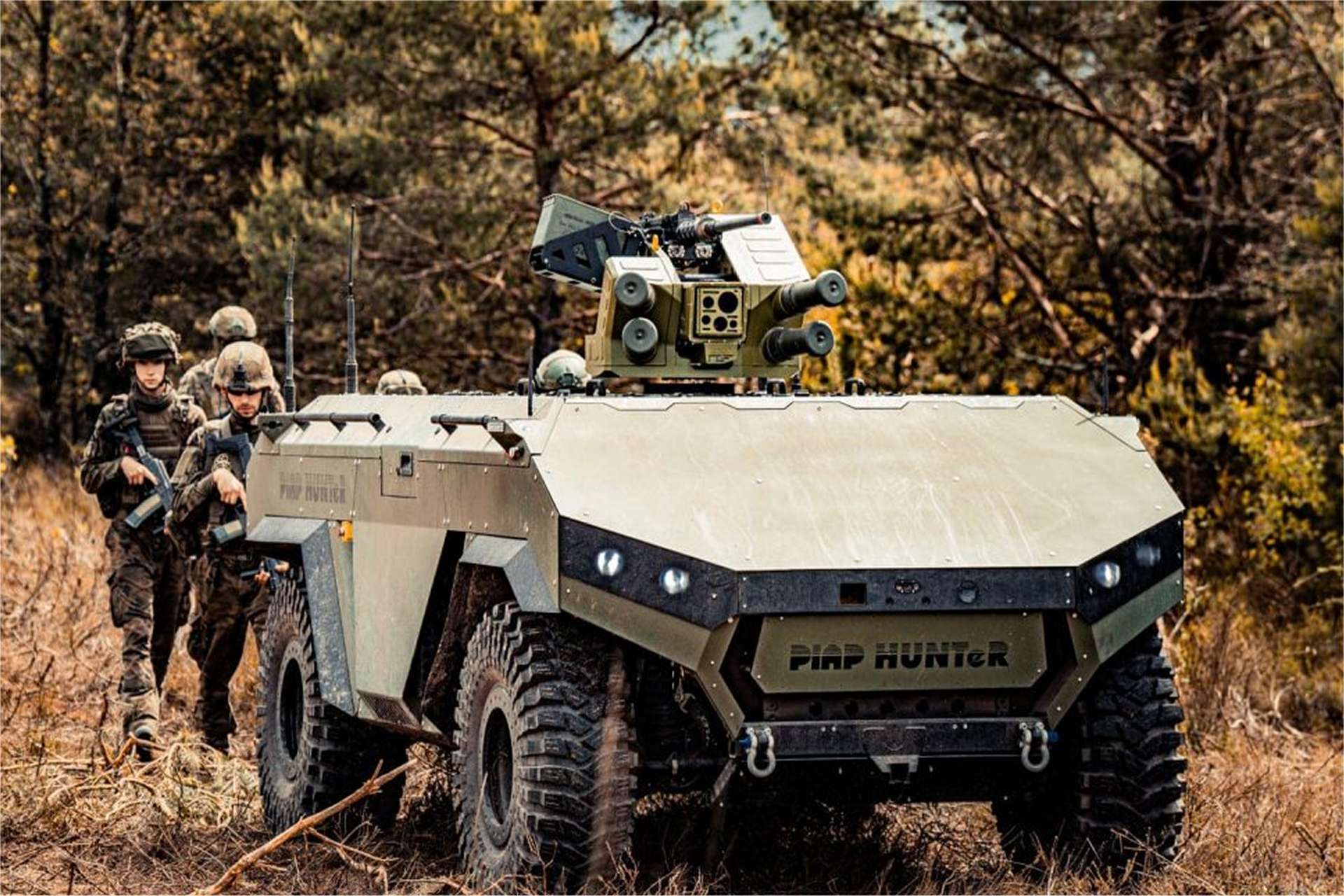Breaking news
Poland Deploys PIAP Hunter Next-Gen Unmanned Ground Vehicle.
In May 2024, the Piap Hunter unmanned ground vehicle (UGV) was seen during a recent training exercise of the Polish 21st Rifles Brigade. This demonstration highlighted the advanced capabilities of the Piap Hunter in surveillance and rapid response, emphasizing its crucial role in the modernization and enhancement of the Polish Army's security operations. The Piap Hunter, with its high mobility and hybrid systems, is designed to excel in a variety of tasks, ranging from land border protection to the management of critical incidents.
Follow Army Recognition on Google News at this link

PIAP Hunter Nex-Gen Unmanned Ground Vehicle (Picture source: Poland MoD)
The HUNTeR is a high-mobility unmanned hybrid platform designed for rapid response tasks in civil security and crisis management. This advanced unmanned ground vehicle (UGV) excels in both routine surveillance tasks, such as land border protection, and rapid intervention scenarios, including responding to border intrusions or critical infrastructure incidents.
Capable of reaching speeds up to 50 km/h in both teleoperated and semi-autonomous modes, the HUNTeR platform distinguishes itself from other market offerings with its sophisticated autonomy algorithms. This ensures a quick response time and efficient navigation across diverse terrains.
As a series hybrid UGV, the HUNTeR combines the advantages of a combustion engine and an electric motor. This hybrid system facilitates extended field operations and silent, low-noise movements, which are crucial for covert observation tasks. The vehicle can operate efficiently in various conditions, providing long-term field performance and the ability to conduct silent operations when necessary.
To further enhance its operational capabilities, the HUNTeR can be equipped with an observation aerial mobile platform (UAV). This UAV acts as an additional vision source and communication relay, significantly extending the range and effectiveness of surveillance and communication.
The HUNTeR platform weighs 3500 kg and measures 470x220 cm with a wheelbase of 270 cm. It can reach a maximum speed of 50 km/h, supported by a robust suspension system. The dependent 3-link type suspension with Panhard bar, coil springs, and controlled damping shock absorbers offers a suspension stroke of 25 cm.
The 4x4 drive system features differential locks, two steering axles, and 1m diameter wheels. The drive power is 90 kW continuous and 220 kW peak, facilitated by a serial hybrid system with traction electric motors integrated with the driving axles.
The vehicle is equipped with disc brakes on the wheels and a parking brake on the electric motor. The power supply is managed by a Li-Ion NMC battery with a capacity of 40 kWh and BTMS system, alongside a 110 kW generator. It supports additional devices with power options including 600 VDC, 3x400 VAC, and 24 VDC.
The HUNTeR is fitted with HD cameras for driving, positioned at the front and rear, and additional cameras on the railing for top views. It has four side cameras (two on each side) and a PTZ camera for panoramic views. The digital communication system offers selectable operating frequencies, such as 1.3 GHz and 2.4 GHz, with a maximum communication range of 800 meters.
Control options include a portable control panel with an additional screen connection, steering wheel, and pedals for precise control. The HUNTeR can also be equipped with a tethered UAV with a landing field and PTZ head, a radio transmitter to extend the control range, and various power supplies for accessories. It includes a set of sensors with an autonomy module for assistant driving in teleoperated and autonomous modes, a hydraulic drive manipulator, and load boxes among other modular equipment.
The Arex ZMU-03 unmanned turret, designed to be mounted on the Piap Hunter UGV, is equipped with a 12.7 mm heavy machine gun and smoke grenade launchers. It also offers the option to be fitted with a small drone. Developed by Arex, a WB Group subsidiary, the turret features advanced stabilization for both the weapon and its observation equipment. It is equipped with day and thermal cameras as well as a laser rangefinder. The turret can be operated either from an onboard station or remotely via a portable console, offering versatility in various combat scenarios.


























